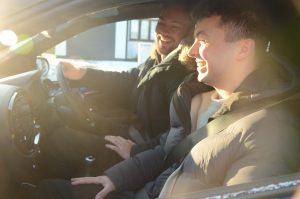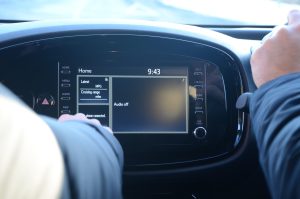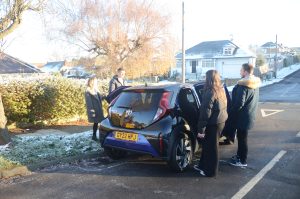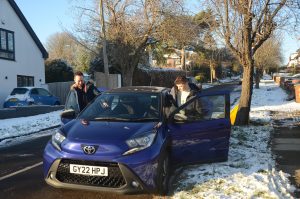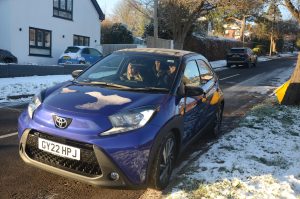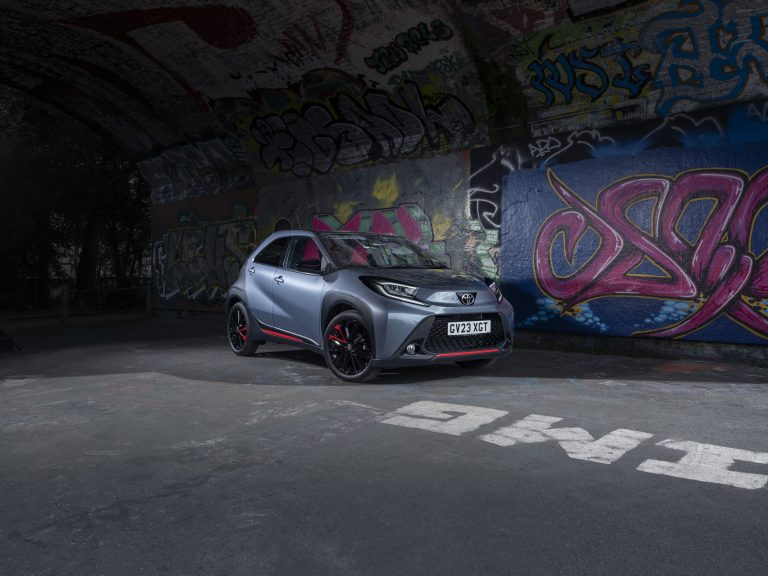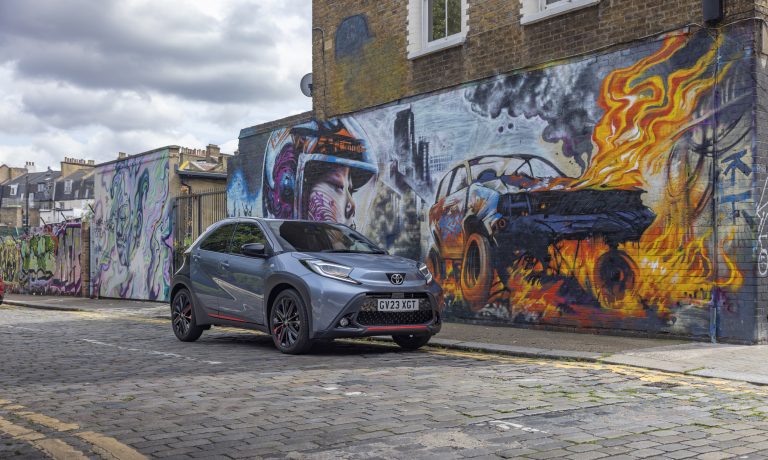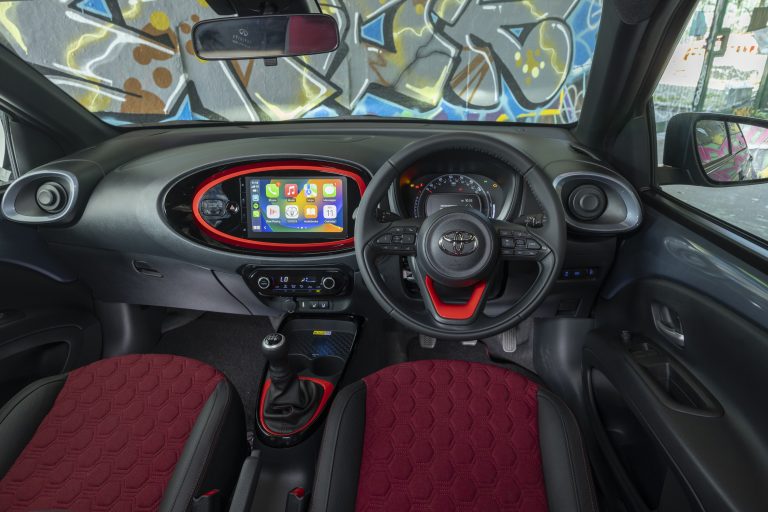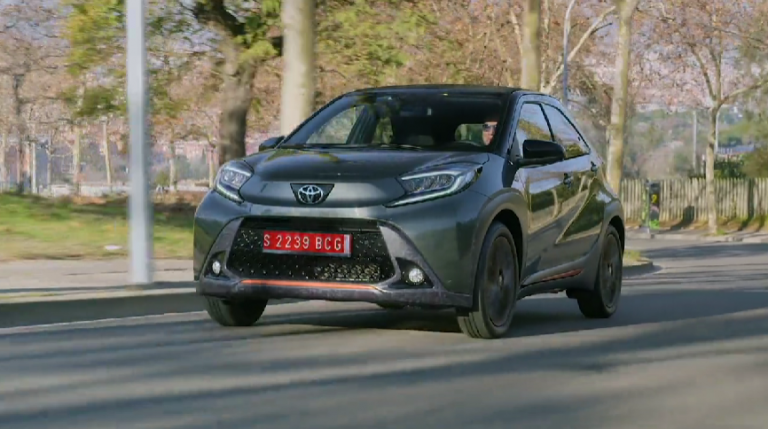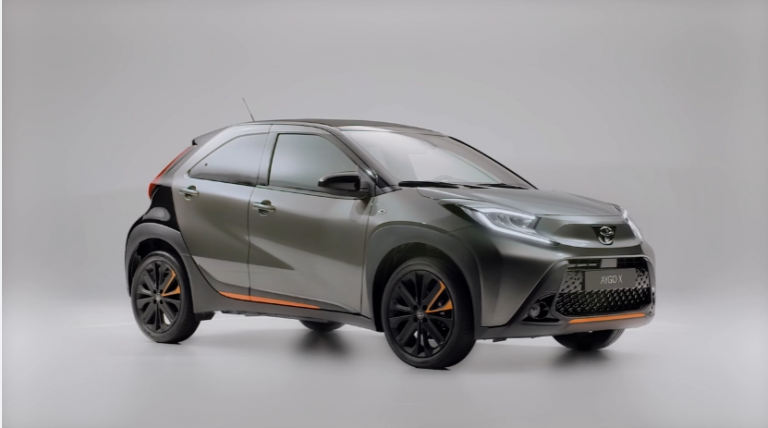Toyota and the Surrey Fire and Rescue Service provide safety tips for young drivers
With the party season underway, Toyota (GB) and the Surrey Fire and Rescue Service have teamed up to provide top tips on safe driving for young people. This follows both organisations’ recent collaboration on the Safe Drive Stay Alive show, which educated thousands of youngsters about safe driving, in a bid to reduce the number of road traffic collisions, deaths and injuries among young people.
The show made a big impression on those that attended, for example, 18-year-old student Solomon Zie, age 18 from Dorking, commented: “I feel like a lot of people need to know the reality of what driving drunk or irresponsibly can do.”
Fellow student Emily Oliver, age 18, from Guildford, said: “The show made me realise how scary it is sometimes, putting your life in the hands of other people, but also how you need to be safe when you go on the road, because you might not only harm yourself, but also others.”
Mark Taylor, Education, Children and Young People Team Manager at Surrey Fire and Rescue Service said: “Passing your test and getting your first car is a real milestone, bringing new freedom and opportunities, but it’s also when young people are most likely to be involved in a crash. The good news is that they can reduce the chances of becoming a statistic by understanding the risks and how to avoid them.”
Toyota’s support for Safe Drive Stay Alive aligns with its global ambition of zero road accidents, through the adoption and continuous improvement of advanced technologies to support drivers and make cars safer, and support for learning opportunities to help people to recognise and understand the risks while at the wheel.
With the festive party season now underway, the Surrey Fire and Rescue Service and Toyota have produced the following driving safety tips for young people:
Drink, drugs and driving don’t mix. Most drivers, whether young or old, wouldn’t dream of drinking or taking drugs, then driving, but a small number of people still think they can get away with it, or just don’t care. According to government statistics (RAS2031) in 2020 there were 6,480 deaths or serious injuries caused by drink driving. Even a small amount of alcohol will affect your driving, so it’s best avoided altogether if you are planning to get behind the wheel.
Belt up
Government statistics* show that while 94.8 per cent of UK drivers used a seatbelt in 2021, there is still a small minority who don’t belt up. The same report shows that 23% of car occupant fatalities in reported road collisions in 2020 were not wearing a seatbelt – so buckle up for every trip.
Resist the urge to show off
It’s natural for someone who has recently passed their driving test and who might be the first in their circle of friends to do so to want to demonstrate their newly acquired skills, but don’t let pride get the better of you. Remember that the consequences of speeding or dangerous driving could be points on your licence (six points within your first two years of passing your test means loss of licence) or a fine of £2,500 for driving without due care and attention. In a worst-case scenario, a serious accident could result in death or injury to you, your friends, or other road users.
Above all, drive at a speed appropriate for the road conditions. Fog, heavy rain, snow, or other hazards could mean this is considerably lower than the legal maximum speed.
Don’t get caught napping
Tiredness is thought to be a greater contributor to road injuries and deaths than drug-driving. Worldwide, it is estimated¹ that between 10% and 20% of all road crashes are fatigue-related. To guard against tiredness, take a break every two hours on long journey and don’t drive late at night. Driving when drowsy slows your reactions and decision-making. If you’re feeling tired it’s best to stop somewhere safe as soon as you can and have a nap for 10-20 minutes.
Keep it quiet
The beep of a mobile phone, loud music, or shouting passengers, all distract the driver. Newly qualified drivers with a car full of passengers of similar age are four times more likely to be in a fatal crash, compared with when driving alone². To avoid distractions when driving, switch off your mobile phone, keep the music volume down and save in-depth conversations for when the journey is over.
Watch out for vulnerable road users
It’s easy to forget how vulnerable other road-users are, such as cyclists, pedestrians, and horse riders. Those who have the least protection are also the hardest to see. Don’t assume they have seen you; look out for elderly people and young children and be prepared to slow down and stop. Give cyclists and horse riders plenty of room when passing: 1.5 metres for cyclists and two metres for horses. Be especially careful when driving past horses: overtake at very low speed, avoiding noisy revs, then accelerate gently.
Use the Dutch Reach when exiting a vehicle, using your left hand to open the driver’s door. This encourages you to move your head and body towards the road, so you can look out for cyclists.
Take responsibility
Paul Fisher – Paramedic and Operating Unit Manager for South East Coast Ambulance Service says: “I think the most important thing is to avoid unnecessary distractions, making sure that you have got your mobile phones turned off, that you are in a safe state to be able to drive, and ultimately, taking responsibility. Being that person in the driver’s seat, it’s not only the responsibility that you’ve got for yourself, but it’s for the others in the car and others outside of your own car as well.
Boost your knowledge
The more you read and learn, the safer you’ll be behind the wheel. The Safe Drive Stay Alive Young Driver’s Guide has information and advice about everything from choosing a driving instructor and shopping for a first car, to what to do in an accident and how to save money on insurance.
ENDS
Editors’ notes
*https://www.gov.uk/government/statistics/seatbelt-and-mobile-phone-use-surveys-2021/seatbelt-wearing-rates-great-britain-2021
¹https://www.brake.org.uk/get-involved/take-action/mybrake/knowledge-centre/driver-fatigue#:~:text=Worldwide%2C%20it%20is%20estimated%20that,road%20crashes%20are%20fatigue%2Drelated

